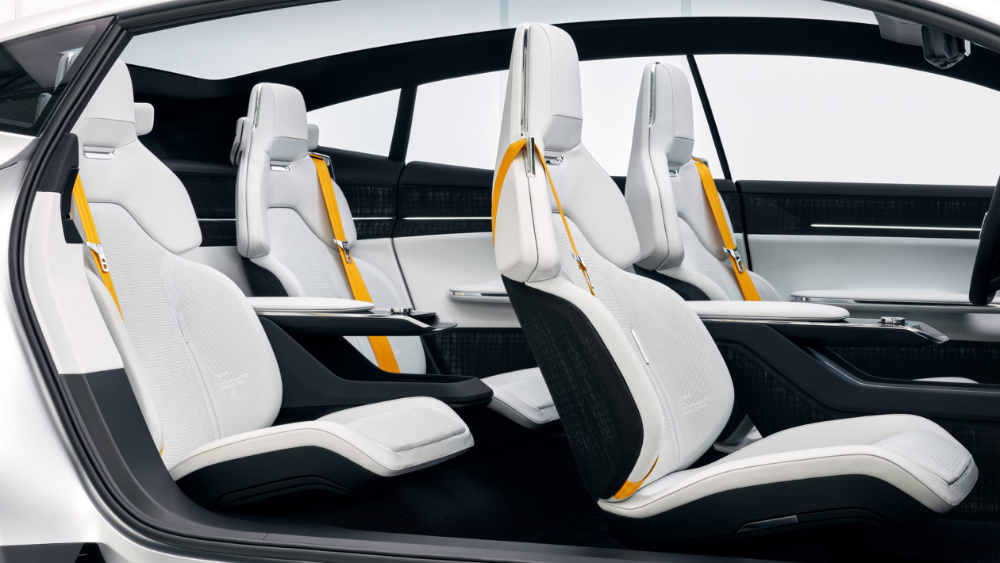Key Impacting Factors Shaping the Automotive Interior Materials Market in a Rapidly Evolving Industry

The automotive interior materials market is witnessing transformative growth, influenced by several dynamic and interconnected factors. As vehicles evolve to meet modern demands for comfort, technology, sustainability, and safety, interior materials have become more than just aesthetic choices—they are strategic elements of product innovation and brand identity. Understanding the key impacting factors is essential to comprehend how the market is shifting and what drives manufacturers and consumers alike.
From regulatory pressures to changing lifestyle trends, here are the primary factors shaping the development, adoption, and innovation of automotive interior materials globally.
1. Technological Advancements in Vehicle Design
The integration of advanced technologies into vehicles has significantly impacted the choice and development of interior materials. Smart surfaces, touch-sensitive fabrics, integrated lighting, and climate-responsive textiles are just a few examples of how technology is altering material requirements.
As cars become more connected and autonomous, the cabin is transforming into an interactive environment. This shift demands materials that not only support these features functionally but also enhance user experience through comfort and responsiveness.
Impact: Increased demand for innovative, tech-compatible materials with multifunctional capabilities.
2. Growing Emphasis on Sustainability
Environmental awareness and strict regulations around vehicle emissions are pushing manufacturers to adopt sustainable materials. Consumers are also more conscious of eco-friendly products, encouraging the use of recycled, plant-based, or low-VOC interior materials.
Automakers are incorporating alternatives such as vegan leather, recycled plastic fibers, bamboo trims, and water-based adhesives. These sustainable solutions are often positioned as key selling points, especially in electric and luxury vehicle segments.
Impact: Surge in demand for recyclable, biodegradable, and renewable materials that support circular economy goals.
3. Consumer Preferences and Lifestyle Changes
Modern consumers place high value on in-car comfort, aesthetics, and personalization. Features like soft-touch surfaces, ergonomic seating, ambient lighting, and quiet cabins have become standard expectations across multiple vehicle segments.
Furthermore, with the rise of ride-sharing and long-distance commuting, car interiors are being designed to feel more like living spaces than just driving environments. This has increased interest in materials that offer tactile comfort, luxury finishes, and acoustic insulation.
Impact: Greater use of premium-feel materials, modular designs, and customization options to meet diverse user expectations.
4. Rise of Electric and Autonomous Vehicles
Electric vehicles (EVs) and autonomous cars have different requirements for interior space and design. Without the need for traditional engine components, EVs offer more interior room and layout flexibility. Autonomous vehicles further redefine the cabin as a leisure or workspace.
This evolution has led to increased experimentation with layout and materials. Interiors must now support extended time spent in the vehicle with features like flexible seating, infotainment zones, and wellness functions—all supported by appropriate materials.
Impact: Acceleration of new material development tailored for EV and AV interior design innovation.
5. Stringent Safety and Regulatory Standards
Global automotive safety and environmental regulations continue to shape the market. Interior materials must meet standards for fire resistance, toxicity, crash performance, and recyclability.
In Europe and North America, strict emission limits and safety codes are driving adoption of materials that are not only safe but also environmentally compliant. Testing procedures and certifications significantly influence material selection during vehicle design.
Impact: Increased investment in R&D to develop compliant yet high-performance materials for all global markets.
6. Cost and Supply Chain Considerations
Cost remains a crucial factor influencing material selection. While innovative and sustainable materials are in demand, they often come with higher production costs. Manufacturers must strike a balance between quality, innovation, and affordability—especially in competitive and price-sensitive markets.
Additionally, global supply chain disruptions have made sourcing consistent and compliant materials a challenge. Manufacturers are re-evaluating sourcing strategies to reduce dependency on limited or overseas suppliers.
Impact: Shift toward locally sourced, cost-effective, and scalable materials that don’t compromise on performance.
7. Urbanization and Mobility Trends
Urban living and the growth of shared mobility platforms like ride-hailing and car-sharing services have changed how interior materials are used and valued. These vehicles often experience higher passenger turnover, making durability, hygiene, and ease of maintenance more important than ever.
Manufacturers are responding with stain-resistant fabrics, antimicrobial coatings, and easy-clean surfaces designed for high-usage environments. These trends are likely to grow with the expansion of urban mobility solutions.
Impact: Demand for high-durability, low-maintenance materials with hygiene-focused enhancements.
Conclusion
The automotive interior materials market is being shaped by a complex mix of technology, consumer behavior, regulatory frameworks, and environmental imperatives. Each factor plays a significant role in influencing design strategies, material innovation, and manufacturing approaches.
To stay competitive, industry players must embrace sustainability, invest in research and development, and adapt to the evolving needs of both drivers and passengers. The future of automotive interiors lies in materials that combine style, function, safety, and sustainability—delivering not just a better vehicle, but a better driving and living experience.
- Art
- Causes
- Crafts
- Dance
- Drinks
- Film
- Fitness
- Food
- Games
- Gardening
- Health
- Home
- Literature
- Music
- Networking
- Other
- Party
- Religion
- Shopping
- Sports
- Theater
- Wellness


